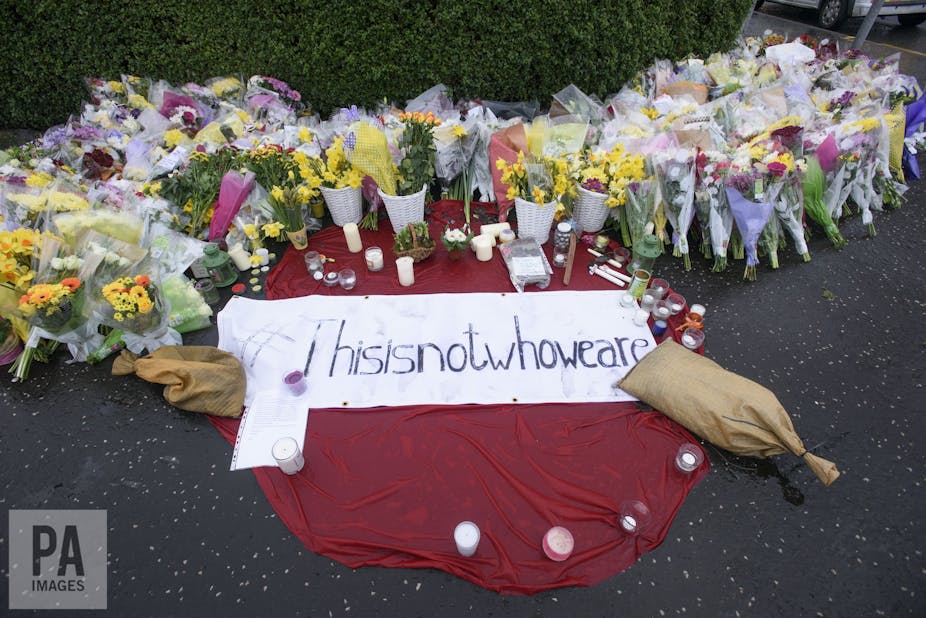Debates on Islam in the West have tended to centre on the compatibility of the values and lifestyles of Muslims and non-Muslims. But two recent murders in the UK have highlighted the need for debate on the compatability of those who hold different Islamic beliefs. As British Muslim communities become more religiously and ethnically diverse, sectarianism could also become more commonplace.
The victim of the first murder, Asad Shah, a Glasgow shopkeeper, belonged to a group of Muslims called the Ahmadiyya. They do not believe that the Prophet of Islam, Muhammad, was the last and final prophet – a view considered heretical by many Muslims and blasphemous by Sunni Muslims. Ahmadiyya believe that the religious leader Mirza Ghulam Ahmad, who died in 1908, was the Mujaddid (renewer of faith), a Messiah sent to guide Muslims back to the true essence of Islam. Sunni Muslims do not share this belief.
In August 2016, Tanveer Ahmed, a Muslim taxi driver from Bradford was sentenced to 27 years in prison for Shah’s murder. Ahmed was a Sunni Barelwi (a populist form of Islam), who said he’d murdered Shah because he had “disrespected” Islam. Ahmed had driven to Scotland to confront Shah about his beliefs. In a statement released by Ahmed after his conviction, he asserted that the murder was in defence of the prophet: “Asad Shah disrespected the messenger of Islam, the Prophet Muhammad peace be upon him.”
Shah’s murder was inspired by another murder in another country some five years earlier – the assassination in Pakistan in 2011 of the governor of Punjab, Salmaan Taseer. The man convicted of the crime, Mumtaz Qadri, a police officer and Taseer’s former bodyguard, was sentenced to death and hanged in February 2016. Qadri had assassinated the governor for wanting to reform the Pakistan’s blasphemy laws and for supporting Asia Bibi (a Christian) who had been sentenced to death for insulting the Muhammad. Qadri believed that in murdering the governor he was defending the honour of the prophet. Qadri’s funeral was attended by thousands of mourners and today, he is revered by some Sunni Muslims as a martyr and a saint.
The web of who is and who is not a true Muslim is complicated further by these transnational connections and linkages. Tanveer Ahmed was one of those who considered Mumtaz Qadri a martyr, writing to him in prison while Qadri was awaiting execution. Despite their violent acts, both men were Sunni Barelwis, ordinarily associated with the spiritual aspects of faith. They are often the ones persecuted for not being “proper Muslims” because their populist branch of Islam includes practices such as devotional Qawwali music and the following of saints. These rituals are considered out of the bounds of Islam by some groups of Muslims, such as Wahhabis and Salafis, followers of a more literalist strand of the religion.
Sunni Barelwis have been targeted in the UK too. In a second murder in 2016, a 71-year-old Barelwi originally from Bangladesh called Jalal Uddin was targeted by two men in their early 20s and murdered as he made his way through the streets of Rochdale. The assailants were Salafis who believed Uddin’s practice of ta’widh (amulets containing passages from the Qur'an used as protection against the evil eye) took him outside the fold of Islam. One of the assailants was sentenced to prison for a minimum of 24 years, while the other suspect fled to Turkey and is believed to have crossed the border into Syria to fight for so-called Islamic State.

Communities becoming more diverse
That the perpetrator of the first murder was of the same faith as the victim in the second highlights the complexities of sectarian divisions within Islam. Barelwis revere Muhammad and have killed to defend his honour. Salafis detest such reverence as false idolatry and link Barelwi customs to black magic. This sectarianism within Islam in the West is a recent development and can be traced to two key factors: greater diversity of those Muslims settling in Europe and the mobilisation of sectarian divisions via the internet.
Long-term immigration into Western Europe is forcing Muslims to confront different ways of practising Islam. Muslim communities in the UK, for example, have changed rapidly in the past 20 years. Changes in patterns of migration have contributed to the development of a highly diverse Muslim population. Between the 1950s and the late 1980s, migration of Muslims to the UK consisted of many primarily economic migrants from a few former colonial countries such as Pakistani and Bangladesh who settled in specific industrial urban locations.
During the past 20 years, fewer migrants from a larger number of countries have made those urban centres their home. New Muslim migrants from countries as diverse as Afghanistan, Iraq, Somalia, Bosnia and Nigeria share mosques, halal butchers, Islamic bookshops and community centres. This “superdiversity” is not limited to Muslim migrants, but reflects a wider development of diverse types of migration patterns.
It is the pace and scale of difference in the past two decades that has had an impact here, accompanied by religious information and sectarian mobilisation on the internet. Unlike many of the pioneer generation of post-war Muslim migrants, their descendants are fully literate and able to access theological material, particularly online. And they are much more aware then their parents’ generation of the theological differences within Islam. There is a real internal debate going on within communities, often with a streak of intolerance which was not as pronounced 20 years ago.
Research on established Muslim communities has argued that the encounter with other Muslims in the diaspora is crucial in the development of the religion. Mixing with other Muslims can inspire theological debate and has the potential to bear significantly on religious identity and the process of transformation across generations. But as the two recent murders have shown, it can also lead to sectarianism and violence.

